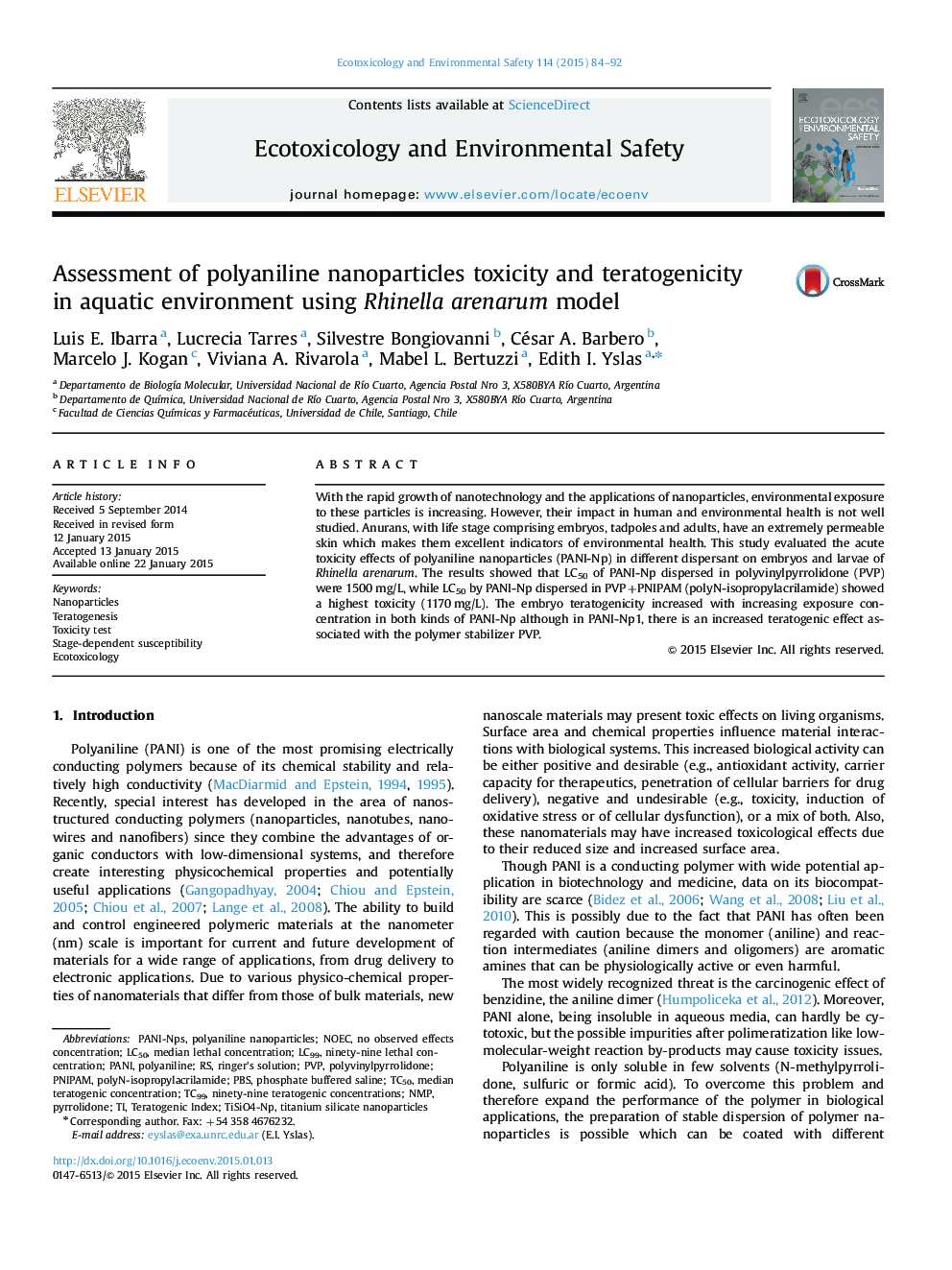| Article ID | Journal | Published Year | Pages | File Type |
|---|---|---|---|---|
| 4419808 | Ecotoxicology and Environmental Safety | 2015 | 9 Pages |
•Toxicity and teratogenicity of nanoparticles were studied on Rhinella arenarum.•Nanoparticle dispersant in PVP and PVP plus PNIPAM present sizes of 200 nm and 90 nm, respectively.•PANI-NPs dispersed in PVP were less toxic than PANI-NPs dispersed in PVP+PNIPAM.•We observed a size-dependent toxicity between the nanoparticles studied in s-25.•Developmental anomalies were identified for both nanoparticles.
With the rapid growth of nanotechnology and the applications of nanoparticles, environmental exposure to these particles is increasing. However, their impact in human and environmental health is not well studied. Anurans, with life stage comprising embryos, tadpoles and adults, have an extremely permeable skin which makes them excellent indicators of environmental health. This study evaluated the acute toxicity effects of polyaniline nanoparticles (PANI-Np) in different dispersant on embryos and larvae of Rhinella arenarum. The results showed that LC50 of PANI-Np dispersed in polyvinylpyrrolidone (PVP) were 1500 mg/L, while LC50 by PANI-Np dispersed in PVP+PNIPAM (polyN-isopropylacrilamide) showed a highest toxicity (1170 mg/L). The embryo teratogenicity increased with increasing exposure concentration in both kinds of PANI-Np although in PANI-Np1, there is an increased teratogenic effect associated with the polymer stabilizer PVP.
